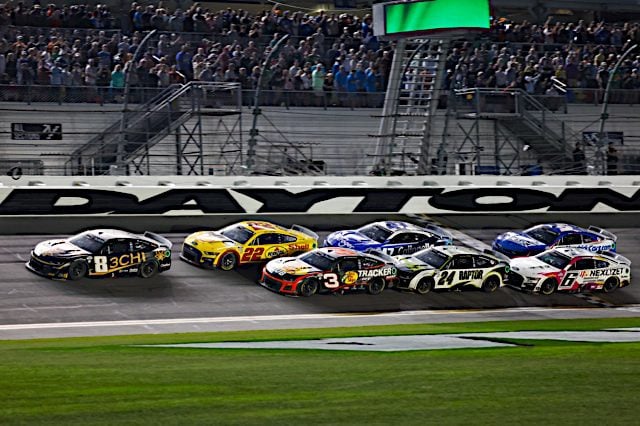What Happened?
DAYTONA BEACH, Fla. – Ricky Stenhouse Jr. barely edged out Joey Logano when the final caution flag waved on Sunday (Feb. 19) at Daytona International Speedway to win his first Daytona 500. The duo was followed by Christopher Bell, Chris Buescher and Alex Bowman.
This is the first NASCAR Cup Series win for JTG Daugherty Racing since 2014 and the first Daytona 500 victory for a black team owner in history (Brad Daugherty).
But What Really Happened?
When it comes to the Next Gen car on superspeedways, more of the same.
And you know what? That’s OK.
We don’t see the three-lane battles that we have become accustomed to at Daytona and Talladega Superspeedway in the past, which of course means less exciting images of cars sandwiching each other while driving at over 190 mph.
On the other hand, the Next Gen car does not like single-file racing either. Almost every time the Cup Series field tried to run single file, out came some motivated driver in the back of the field to begin another line again.
That’s the cool part.
In case you haven’t noticed, the Next Gen cars really seem to work well when the field is side-by-side in these drafting races. If you don’t believe that, rewatch the first 10 laps of this race and say how many passes you saw.
With the exception of some scattered multi-car crashes here and there, Sunday’s race was mostly a stagnant neck and neck drag race on a 2.5-mile racetrack.
And it’s the same thing we’ve been seeing on these racetracks in the new car since last year’s Daytona 500. With more two-lane racing, the more there’s battles for the lead.
At Talladega in 2021, there were 69 combined lead changes after both of the season’s races there with the old car.
With the Next Gen in 2022, there were 99.
Of course, this isn’t Talladega we’re talking about. It’s the Daytona 500 and that comes with its quirks. One of them is how every driver loses their minds in the last 10 laps.
In typical Daytona fashion, the whole field saw red in the closing laps of this race to ensue plenty of carnage. That gave it enough overtime attempts to make this 500 the longest one in history with an extra 12 laps. That’s an extra 30 miles.
It’s the same pattern that we’ve seen in almost every Great American Race since the Car of Tomorrow and that’s likely not going to change anytime soon.
Is that a good thing? Not unless you like that kind…
Click Here to Read the Full Original Article at …

